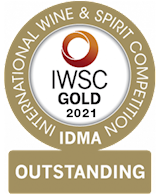Best North Rhine-Westphalian Liqueur Types
Killepitsch is a German herbal liqueur (kräuterlikör) that is made with 98 different herbs and spices. The drink has been produced since 1858 by the Busch family from Düsseldorf, and the original recipe is still kept secret.
Killepitsch is a rich and smooth dark red liqueur that is characterized by bittersweet flavor and aromas of dried fruit and warming spices. It is best served well chilled, and it is mostly enjoyed as a digestif. Killepitsch is bottled at 42% ABV.
This German herbal liqueur is produced with the aromatic extraction of 43 herbs that results in an amber-colored, herbal drink, with notes of spices and licorice. The base is then aged in oak casks before it is adjusted with fresh spring water to reach the 44% ABV. Underberg is still produced following the original recipe, which dates back to 1851 and is only known by the members of Underberg family.
The drink is traditionally enjoyed as a digestif, typically served in the signature tall glasses. It is sold in copyrighted 20ml bottles that are wrapped in straw paper.
Bärenjäger is a honey liqueur that hails from Germany. The recipe, which remains secret, is based on an old formula dating back to the 18th century. The liqueur is made with a combination of grain spirit and honey, with additional secret ingredients.
The resulting drink is golden-colored and sweet, without being cloying. The aroma is herbal and spicy, while the finish is long. It is bottled at 35%ABV (70 proof). Bärenjäger can be enjoyed neat or on the rocks. It also makes a great ingredient in cocktails and long drinks.
Best North Rhine-Westphalian Liqueur Producers
AWARDS

IWSC- International wine & spirit competition - Spirit Gold
2021, 2020

IWSC- International wine & spirit competition - Spirit Gold Outstanding
2021
BEST Pabst & Richarz Vertriebs Spirits
TasteAtlas food rankings are based on the ratings of the TasteAtlas audience, with a series of mechanisms that recognize real users and that ignore bot, nationalist or local patriotic ratings, and give additional value to the ratings of users that the system recognizes as knowledgeable. TasteAtlas Rankings should not be seen as the final global conclusion about food. Their purpose is to promote excellent local foods, instill pride in traditional dishes, and arouse curiosity about dishes you haven’t tried.


